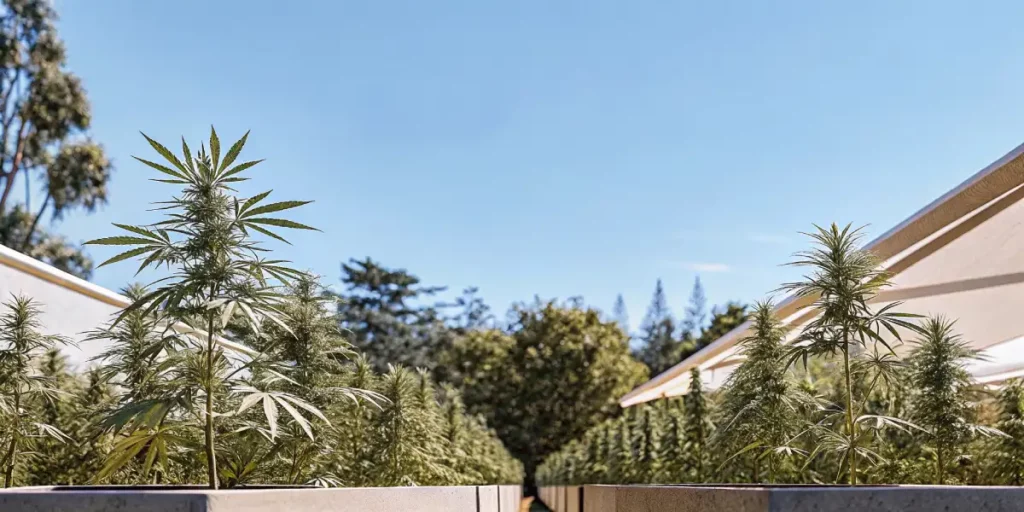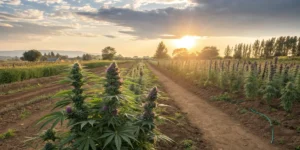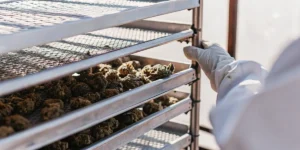Blue Cheese Auto is an autoflowering strain that combines the classic flavors of Blueberry and Cheese into a compact and easy-to-grow plant. It’s ideal for both novice and experienced growers due to its resilience and relatively fast lifecycle. This guide provides a comprehensive step-by-step approach to cultivating this cannabis variety successfully.
The first step in growing this strain is selecting the right cultivation environment. It thrives both indoors and outdoors, but for optimal results, an indoor setup is recommended. Utilize a grow tent to control the environment while ensuring sufficient lighting with LED or HID grow lamps. Maintain a consistent light cycle of 18–24 hours during its lifecycle to enhance growth.
Soil is the preferred medium, although hydroponic systems can also support its development. Opt for high-quality organic soil, which offers essential nutrients and promotes the formation of flavorful buds. Ensure the soil is well-aerated and drains sufficiently to prevent over-watering, which could lead to root rot. Consider using fabric pots to improve root zone aeration.
Feeding is crucial when cultivating this strain. Provide a balanced nutrient mix throughout the various growth stages—start with a nitrogen-rich blend during the vegetative phase. As the plant transitions to flowering, gradually switch to phosphorus and potassium-rich fertilizers. Always follow recommended feeding schedules closely and watch for signs of nutrient deficiencies or burning.
Pruning and training techniques are minimal given the plant’s compact structure. However, employing low-stress training (LST) methods can maximize light exposure to bud sites, potentially improving yield. Keep an eye on the plant’s progression, as it usually flowers within 8–10 weeks from germination, ensuring timely harvesting for best results.
Harvesting is relatively straightforward. Plan to harvest when trichomes begin to turn milky with a slight amber tint—typically around 10 weeks post-germination. Dry and cure the buds carefully to preserve their distinct aromas and flavors, guaranteeing a high-quality final product with a smooth, cheesy, and earthy undertone.
Strain Overview: Traits, Effects & Genetics
Blue Cheese Auto is an esteemed autoflowering strain renowned for its unique combination of delicious flavor, potent effects, and impressive genetics. Born from a cross between the famed Blueberry and Cheese strains, this hybrid inherits the best traits from both parents, resulting in a plant that is both easy to grow and a joy to consume. Its autoflowering nature makes it particularly attractive to growers of all experience levels, as it requires less maintenance and tends to have a shorter flowering period compared to photoperiod strains.
The physical traits of this strain are as appealing as its lineage. It typically exhibits a bushy growth pattern with dense, resinous buds that shimmer under light. The buds are compact, often covered in an array of trichomes that hint at its potency. The distinguishing aroma is where it truly stands out. The smell can be described as a mix of sweet berries and earthy undertones from the Blueberry lineage, combined with the distinctive sharpness of the Cheese strain, creating an alluring scent profile.
The effects are inviting and well-balanced, making it suitable for both recreational and medicinal use. Users report a delightful blend of uplifting and calming sensations, providing both relaxation and euphoria without overwhelming sedation. This makes it an excellent choice for those seeking relief from stress or anxiety, while still wanting to maintain focus and clarity. The strain’s cannabinoid profile typically features a moderate to high THC content, contributing to its ability to deliver such well-rounded effects.
Genetically, it is a balanced hybrid, retaining the best characteristics of its parent strains. The autoflowering component is derived from adding ruderalis genetics, which ensures that it transitions from the vegetative stage to flowering automatically, without the need for light cycle changes. This genetic blend not only simplifies the cultivation process but also allows the plants to be harvested in as short as 8–10 weeks from germination. This efficiency makes it an attractive option for growers interested in multiple harvests per season.
Optimal Environment to Grow Blue Cheese Auto Successfully
Blue Cheese Auto is a popular autoflowering cannabis strain known for its unique flavor and aroma, as well as its robustness and ease of cultivation. To ensure optimal growth, it’s crucial to understand the ideal environmental conditions required for this strain. One of the primary factors to consider is the temperature. This strain thrives best in a moderate climate, with daytime temperatures between 70–80°F (21–27°C). Night temperatures should not drop below 60°F (15°C) to ensure the plant continues its metabolic processes efficiently.
Humidity levels also play a significant role in successful cultivation. During the vegetative stage, keep humidity between 50–70% to help the plant absorb nutrients and grow steadily. As it enters the flowering stage, lower the humidity to around 40–50% to prevent mold and mildew, which can be detrimental to your yield. Using a dehumidifier in your grow space can be an effective way to manage this.
Lighting is another critical component. Due to its autoflowering nature, this strain can handle more light than the typical 12/12 schedule used for photoperiod strains. A cycle of 18 hours of light followed by 6 hours of darkness is often recommended. This provides the plant with ample light to photosynthesize, promoting healthier growth and maximizing yields. Be sure to use quality full-spectrum LED or other grow lights designed for cannabis production.
Furthermore, proper air circulation is vital in promoting a healthy growing environment. Stagnant air can encourage the growth of pests and diseases, so installing oscillating fans ensures airflow throughout your grow space. This helps maintain consistent temperature and humidity while also strengthening plant stems. By creating an environment that meets these criteria, you can ensure a bountiful harvest of high-quality cannabis.
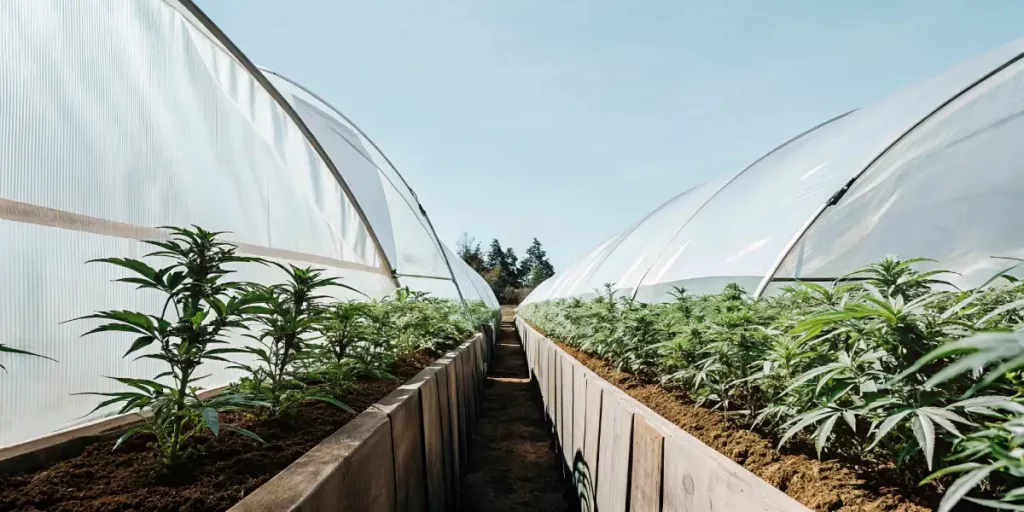
Grow Room Setup Plants
When it comes to cultivating Blue Cheese Auto plants, setting up your grow room correctly is crucial for optimizing yield and ensuring healthy plant development. This autoflowering strain is known for its resilience and aromatic profile, making it particularly appealing for both novice and experienced growers. Just like Northern Lights cannabis seeds, Blue Cheese Auto thrives in controlled environments. An indoor grow room allows you to manage key variables such as light, temperature, and humidity—factors essential for reaching the plant’s full potential.
Lighting is a key factor in the growth of autoflowering plants. Since these strains don’t depend on light cycles to begin flowering, they still require a substantial amount of light to thrive. LED lights are recommended due to their energy efficiency and ability to emit a full spectrum of light, closely mimicking natural sunlight. Position these lights around 18–24 inches above the canopy to ensure even light distribution without causing heat stress to your plants.
Temperature control is another vital aspect of setting up your grow room. These plants prefer a stable temperature range of 68–77°F (20–25°C) during the day and slightly cooler nights, around 60–68°F (15–20°C). These conditions mimic their natural environment and help in maintaining robust growth. Using fans can aid in circulation and temperature regulation, while a thermometer is indispensable for monitoring conditions.
Humidity levels in the grow room need to be carefully managed as well. Autoflowering plants require different humidity levels at various growth stages. During the vegetative stage, maintain a humidity level of 60–70%. As the plants transition into the flowering stage, gradually reduce humidity to around 40–50% to prevent mold and mildew. A hygrometer can help keep track of these levels efficiently.
Additionally, ensure your grow room has adequate ventilation. Proper airflow is essential to prevent the buildup of excess humidity and carbon dioxide, which can lead to pest infestations and diseases. Installing an exhaust fan and an oscillating fan will keep fresh air circulating and remove stale air, thus maintaining a healthy growing environment.
Indoor Growing Tips
Growing Blue Cheese Auto indoors can be a rewarding experience for both novice and experienced cultivators due to its ease of growth and remarkable resilience. This autoflowering strain does not rely on specific light cycles to flower. This trait allows for a more straightforward indoor growing process, as growers do not need to switch light settings to trigger flowering. Instead, maintaining a consistent light schedule, typically 18–24 hours of light per day, will suffice, enabling the plant to thrive and produce high yields.
Temperature and humidity control are essential components of a successful indoor grow. This strain prefers a stable environment with temperatures ranging between 70–80°F (21–27°C) during the day and slightly cooler at night. Humidity should be kept at 40–50% during the vegetative stage and slightly reduced to 30–40% during flowering to mimic natural preferences and prevent mold or mildew. Investing in a good quality ventilation system and using oscillating fans will help maintain these conditions and promote robust plant health.
Proper nutrient delivery is crucial for indoor cultivation, as these plants have specific nutritional requirements that vary throughout their life cycle. During the vegetative stage, a balanced nutrient mix with higher nitrogen levels supports robust foliage development, while during flowering, higher phosphorus and potassium levels support bud formation and potency. Autoflowers are generally sensitive to nutrient overfeeding, so following a “less is more” approach is recommended. Monitoring pH levels is equally important, with the ideal range being 6.0–6.5.
Container size also plays a vital role in successful indoor cultivation. Using a container of at least 3–5 gallons helps the plants develop a strong root system to support vigorous growth. Fabric pots are an excellent choice as they enhance drainage and promote air pruning, which prevents root-bound conditions and enhances root health. Regular watering is essential, but be cautious not to overwater; allowing the soil to dry out slightly between watering helps to enhance oxygen uptake by the roots.
Finally, training techniques like low-stress training (LST) can be applied to maximize light exposure and space management, optimizing yields. By gently bending branches to let more light reach lower parts of the plant, you can encourage uniform growth and improve yield potential without causing stress. With correct implementation of these indoor growing tips, cultivators can expect to harvest fragrant, potent buds packed with the strain’s signature sweet and tangy aroma.
Outdoor Growing Tips
Growing this autoflowering plants outdoors can be both rewarding and straightforward, thanks to its autoflowering genetics and robust nature. Blue Cheese Auto thrives in a variety of climates, but to maximize yield and potency, providing an optimal growing environment is essential. Start by selecting a location that receives abundant sunlight, as this strain flourishes under full sun exposure. Providing at least 6 to 8 hours of direct sunlight daily will ensure the plant grows healthy and strong.
Soil quality is paramount for outdoor growing. When planting in the ground, ensure the soil is rich in organic matter. If planting in containers, use a well-drained potting mix enhanced with organic fertilizers. This variety prefers slightly acidic to neutral soil, with a pH level ranging from 6.0 to 6.5, to allow for optimum nutrient uptake. Regularly test the soil’s pH and amend it accordingly to maintain this balance.
Watering is another critical aspect of outdoor cultivation. The plant has relatively moderate water requirements; thus, it’s crucial to avoid both overwatering and underwatering. During initial growth phases, maintain consistent moisture, but allow the topsoil to dry out between waterings to prevent root rot. As it matures and enters the flowering stage, adjust watering amounts, as excessive moisture during this phase can lead to mold and mildew.
Outdoor pests and diseases present challenges for any cannabis grower. To protect your plants, consider using natural pest repellents, such as neem oil, and encourage beneficial insects like ladybugs which naturally control harmful pests. Practicing good garden hygiene by removing debris and fallen leaves also helps minimize pest problems. Additionally, early monitoring for signs of disease and pests can facilitate prompt action, safeguarding your plants’ health.
Timing your planting to coincide with your local climate is vital. This strain can be susceptible to extreme weather conditions, so plan to ensure the flowering period does not clash with frost or excessive rain. Typically, starting the growing cycle after the last frost in your region allows the plant to mature under favorable conditions. With careful planning and attention to detail, growing outdoors can result in a harvest of dense, aromatic buds.
How to Germinate & Propagate Blue Cheese Auto
The Blue Cheese Auto strain is an auto-flowering variety known for its resilient nature and ease of growth. Germinating and propagating this strain is a straightforward process, making it ideal for both novice and experienced growers. The first step is understanding the optimal conditions for seed germination. Start by soaking the seeds in lukewarm water for 12 to 18 hours. This helps in breaking the seed’s dormancy, making it more receptive to sprouting. It’s crucial to use filtered or distilled water to avoid any chemical interference that may hinder germination.
After soaking, prepare a moist environment for sprouting. The most common method involves using a paper towel. Place the seeds between two damp paper towels and then place them inside a ziplock bag or cover them with a plastic dome to maintain humidity. Ensure the paper towels remain moist, but not drenched, as overly wet conditions can cause the seeds to rot. Temperature plays a pivotal role in successful germination; maintain a consistent environment between 70°F to 85°F (21°C to 29°C). Check daily for signs of a taproot, which usually emerges within 1 to 3 days.
Once the taproot appears, it’s time to transfer the seeds to a growing medium. These seeds can be propagated in soil, coco coir, or hydroponic setups. If transitioning to soil, make a small hole about 1/4 inch deep and gently place the seed with the taproot facing downward. Lightly cover it with soil and keep the medium consistently moist. Using a seedling heat mat can help maintain optimal soil temperature, aiding rapid growth. Ensure proper light is provided, even at this early stage—18 hours of light per day is ideal during propagation to promote healthy development.
Proper care during these initial stages is crucial for maximizing the Blue Cheese Auto’s growth potential. Monitor the seedlings as they grow, and make sure to keep the humidity levels around 60% to 70%. This strain’s auto-flowering nature means it will transition to the flowering stage on its own after about 3 to 4 weeks from germination, regardless of light cycle changes. Remember that the simplicity of propagating Blue Cheese Auto is one of its greatest assets, but diligence regarding environmental factors can ensure a robust and bountiful harvest.
Vegetative Stage: Nurturing Your Blue Cheese Auto Plants
The vegetative stage is a critical phase for your plants, as this is when they develop the structure necessary for supporting abundant flowering later. During this stage, focus on providing your plants with optimal light conditions, adequate nutrients, and a controlled environment to maximize their growth potential. These strains thrive in environments where the temperature is kept between 70-80°F and humidity is maintained at around 40-50%. Proper ventilation is essential in preventing mold and mildew, which can stunt growth and reduce yields.
Lighting plays a pivotal role during the vegetative stage. Auto-flowering strains benefit from a light schedule of 18-24 hours, ensuring they receive ample light energy to fuel vigorous vegetative growth. If using artificial lighting, opt for a full spectrum LED light or a combination of metal halide and full-spectrum fluorescent lights to simulate the sun’s full spectrum. Position the lights close enough to provide sufficient intensity but far enough to avoid leaf burn, usually around 20-30 inches away from the plant top depending on the wattage and light type.
Nutrient management is another key aspect of nurturing your plants through their vegetative stage. A well-balanced fertilizer high in nitrogen will support robust foliage growth, essential for healthy plants. Apply nutrients judiciously, as overfeeding can lead to nutrient burn, manifesting as brown leaf tips and edges. A nutrient schedule should be paired with a consistent watering routine, allowing for adequate drying out between watering sessions. Check soil moisture using your finger or a moisture meter before watering to prevent overwatering, which can lead to root rot.
Training techniques can also be employed during the vegetative stage to maximize light exposure and space utilization. Low-stress training (LST) is particularly effective as it gently encourages plants to grow horizontally, increasing light penetration and improving airflow. This method involves carefully bending and tying down stems using plant ties, prompting the plant to develop multiple colas without causing significant stress. Topping, another technique involving removing the plant’s tip, is less commonly used in autoflowers due to their short lifecycle but can be applied cautiously on robust plants.
Finally, monitoring for pests and disease is crucial during the vegetative stage. Regularly inspect leaves for signs of pests like aphids, spider mites, or thrips. Early detection and intervention with organic pesticides or insecticidal soaps can prevent infestations from taking hold. By maintaining a clean grow area and employing these nurturing techniques, your plants will transition into the flowering stage ready to produce potent, resinous buds.
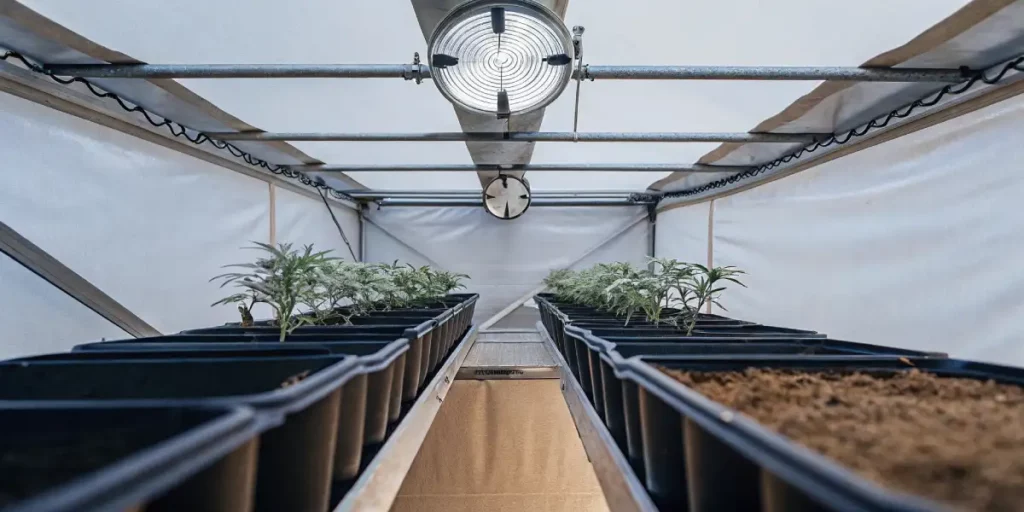
Flowering Blue Cheese Auto: What to Expect
When cultivating Blue Cheese Auto, a popular autoflowering strain, growers can anticipate a rewarding flowering phase that typically commences around week six. This strain, a hybrid combination of Blueberry Auto and Cheese Auto, is known for its unique aroma and robust flavors. The flowering period of this strain usually lasts between seven to nine weeks, making it a relatively swift cycle ideal for those seeking quick harvests without compromising quality.
As flowering begins, you will notice a gradual accumulation of dense, resin-coated buds. The plant tends to maintain a moderate height, often reaching between 75 to 100cm, making it suitable for both indoor and limited outdoor growing spaces. During the flowering phase, it’s crucial to monitor the nitrogen levels since this variety benefits from a balanced nutrient regimen, particularly a reduction in nitrogen, to ensure optimal bud development and potency.
One of the most distinctive characteristics of the flowering phase is its aromatic profile. Growers can expect a rich and pungent scent to fill the growth area, marked by unmistakable notes of ripe berries blended with an earthy, cheesy undertone. This unique fragrance is a hallmark of its genetics and can help growers gauge the maturity of the plant. Implementing proper air filtration systems is advisable to manage the strong odor efficiently.
Throughout the flowering period, it’s important to maintain appropriate environmental conditions to maximize yield and quality. Consistent temperature and humidity control will mitigate the risk of mold or mildew, which can be detrimental to the buds. Additionally, support systems may be necessary to accommodate the weight of the burgeoning colas. Overall, attention to these aspects during the flowering stage can lead to a successful harvest, laden with signature aromatic and potent buds.
Fertilizers & Nutrient Schedule
Blue Cheese Auto is a highly popular strain among cannabis cultivators, known for its unique flavor profile and robust growth characteristics. Feeding this plant properly is vital to ensure it reaches its full potential. This autoflowering strain has a shorter growth cycle compared to photoperiod strains. This short lifespan necessitates a precise and carefully planned nutrient schedule to avoid deficiencies or excesses that could hinder its development.
During the vegetative stage, which lasts for about three to four weeks, the plant favors a nitrogen-rich environment. A balanced N-P-K (Nitrogen-Phosphorus-Potassium) fertilizer with higher nitrogen levels will promote strong and healthy foliage. A commonly recommended ratio during this phase is 4-2-3. Maintain a consistent feeding schedule, providing nutrients every other watering to prevent nutrient burn or buildup. It’s important to monitor the pH level of the soil or hydroponic solution, aiming for a pH of 6.0 to 6.5, to ensure optimal nutrient uptake.
As the plant transitions into the flowering stage, which usually begins around week four or five, the nutrient requirements shift significantly. During this period, the plant requires increased phosphorus and potassium to support bud development. Switching to a bloom fertilizer with a higher concentration of phosphorus and potassium, such as a 2-4-8 ratio, will encourage bigger, denser flowers. Consider introducing additional micronutrients like calcium and magnesium to support overall plant health.
Throughout the growing cycle, it’s essential to pay attention to the plant’s response to the feeding regimen. Over-fertilization can lead to nutrient lockout and stunted growth, so watch for signs such as leaf burn or discoloration. Flush the medium with pure water if any nutrient imbalances occur. Employing a regimen of “feed-water-water,” where nutrients are provided every third watering, can help prevent buildup and maintain a balanced nutrient profile. This approach minimizes stress and supports optimal yields, allowing you to enjoy the signature aroma and flavor the strain is known for.
Pest and Disease Prevention for Healthy Cannabis Plants
When growing Blue Cheese Auto cannabis, ensuring your plants are protected against pests and diseases is crucial for a bountiful harvest. The compact nature and dense foliage of some autoflowering cannabis strains can make them susceptible to certain pests and diseases, so preventive measures are vital. Begin by choosing high-quality seeds from a reputable supplier to ensure a strong start. Cultivating healthy plants begins with a solid foundation and choosing seeds bred for resistance against common pests and diseases.
Monitoring is an essential part of pest and disease prevention. Regularly inspect your plants for signs of distress such as discolored leaves, unusual spots, or wilting. Implementing a consistent schedule to check both sides of leaves and stems can catch early warning signs before they become serious issues. Setting up yellow sticky traps near your plants can help monitor pest predation and identify which pests are present. Early detection of pests like spider mites, aphids, and whiteflies can dramatically improve your chances of managing infestations.
Environmental control plays a significant role in preventing diseases. Ensure your grow space maintains optimal humidity levels (40–50% during the vegetative stage and 30–40% during flowering) to minimize fungal infections such as powdery mildew. Good air circulation is also crucial; using fans or exhaust systems can help reduce stagnant air that fungi thrive in. Alongside airflow, correctly spacing your plants can prevent overcrowding, reducing the likelihood of moisture buildup and subsequent mold formation.
Organic, preventative measures like neem oil, insecticidal soap, or diatomaceous earth can be effective in controlling pests without harming the plants or environment. Applying these solutions regularly as part of an integrated pest management (IPM) program can provide a protective layer for your cannabis crop. Integrating companion planting with herbs like basil or marigold around your growing area can act as natural pest repellents. These companion plants not only deter pests but can enhance the health and growth of your cannabis plants.
Finally, maintaining cleanliness in and around your growing area helps minimize any potential for infestations. Regularly cleaning gardening tools, pots, and grow spaces can eliminate residual pests and pathogens. Dispose of any fallen leaves, dead plant material, or debris to reduce habitats for pests. By maintaining an organized and clean growing environment, you can significantly mitigate the risk of pest and disease problems, ensuring vigorous, healthy plants.
Harvesting & Drying Blue Cheese Auto the Right Way
Harvesting Blue Cheese Auto at the perfect time is critical to ensure the highest quality and potency of your cannabis. Typically, these auto-flowering plants are ready to harvest around 8-10 weeks from germination. Look for visual cues such as the color of the pistils—when approximately 70% of them have turned amber or brown, it’s a sign your plants are nearly ready. The trichomes serve as another vital indicator. Using a magnifying glass or microscope, observe the trichomes; when most have shifted from clear to milky white with a few turning amber, it’s time to harvest. This stage ensures the cannabinoids are at their peak.
Upon deciding it’s time to harvest, ensure you have all necessary tools at your disposal, such as shears and gloves, to facilitate a smooth process. Cut the plants at the base and carefully trim away the fan leaves while leaving the sugar leaves intact as they’re coated with resin. This trimming process helps in maintaining only the cannabinoid-rich parts of the plant, enhancing the potency and flavor profile of the strain. After trimming, it’s important to hang them upside down in a dark, well-ventilated area to commence the drying process.
The drying process is key to preserving the flavor and efficacy of your harvest. Maintain a controlled environment with temperatures between 60-70°F (15-21°C) and humidity levels at 50-60% to prevent mold and preserve terpenes. Typically, the drying process takes 7-10 days. Always monitor the buds by touching their outer layers; they should feel dry but not crumbly. A proper drying process helps in breaking down chlorophyll, resulting in smoother and more flavorful smoke. Once adequately dried, the buds should be jarred for curing to further develop their aroma and potency.
After drying, the curing process ensures the optimal quality of your buds. Place the dried flowers in airtight jars, leaving some room at the top for air. Store them in a cool, dark place for curing. Open the jars daily during the first two weeks to allow fresh air in and excess moisture out to prevent mold. This process enables the buds to breathe and the flavors to enhance further. Proper curing not only enriches the overall quality but also stabilizes the cannabinoids. After a cure period of at least 2-4 weeks, your buds will be ready for consumption, offering a perfect blend of potency and flavor.
Blue cheese auto Strain Type: Indica, Sativa or Hybrid?
Blue Cheese Auto is a popular strain among cannabis enthusiasts, renowned for its unique combination of flavors and effects. Classified as an autoflowering hybrid, this strain brings together the best of both Indica and Sativa genetics. This hybridization results in a balanced profile that offers growers and consumers a fusion of characteristics typically associated with both cannabis subspecies. Hybrid strains like this often aim to deliver a more versatile experience by incorporating the soothing and relaxing qualities of Indica, along with the uplifting and creative effects of Sativa.
Indica strains are generally known for their sedative effects and are often recommended for nighttime use. They have a reputation for inducing a sense of calm and relaxation, which can be beneficial for those seeking relief from stress or pain. This particular hybrid inherits these Indica traits through its lineage, which includes the original Blue Cheese strain known for its strong Indica dominance. As a result, users can expect a body-centered high that aids in relaxation, making it an ideal choice for unwinding after a long day.
At the same time, it doesn’t neglect the energizing effects often associated with Sativa strains. While predominantly showcasing Indica characteristics, its hybrid nature means it also includes some Sativa genetics. This brings a mild cerebral high that can stimulate creativity and improve focus. This balanced effect makes it appropriate for both daytime and evening use, depending on the user’s personal preference and tolerance level. The presence of Sativa elements ensures that its effects are not overwhelmingly sedative, allowing users to enjoy a moderate psychoactive experience.
Why Grow Blue Cheese Auto? Key Benefits for Cultivators
This strain is an enticing choice for cannabis cultivators due to its unique combination of ease of growth and high-quality yield. A blend of Blueberry and Cheese genetics results in a stable, resilient plant that thrives in various environments. For both novice and experienced growers, it offers a manageable and satisfying growing experience. Its autoflowering properties eliminate the need for light cycle manipulation, making it an excellent option for those looking to streamline their cultivation process without sacrificing product quality.
One of the standout benefits of growing this strain is its rapid growth cycle. Typically, the entire lifecycle, from germination to harvest, takes around 8–10 weeks. This fast turnaround allows cultivators to achieve multiple harvests within a single growing season, significantly increasing overall yield. Furthermore, the compact size of the plants makes them ideal for growers with limited space, whether indoors or outdoors, while still producing generous yields of aromatic and potent buds.
Another compelling reason to cultivate this variety is its robust resilience to common pests and diseases. Its hardy nature means it can withstand less-than-ideal conditions and remain healthy, reducing the need for intensive plant care and constant monitoring. This resilience not only saves time and effort but also decreases the likelihood of crop loss, ensuring a more reliable and fruitful harvest. Additionally, the strain’s unique aroma, characterized by sweet blueberries and earthy cheese, alongside its potent effects, guarantees a satisfying product that can enhance the reputation of any cultivator’s supply.
Potential Challenges When Growing Blue Cheese Auto
Growing Blue Cheese Auto, an auto-flowering variety with a strong lineage, can be a rewarding experience for cultivators. However, one of the challenges faced by growers of this strain is managing its strong and pervasive aroma. The distinctive aroma can attract unwanted attention, particularly in regions where cannabis cultivation is closely monitored. Implementing adequate odor control measures, such as carbon filters and proper ventilation systems, is crucial in preventing the strong scent from escaping your growing area.
Another challenge growers may encounter is the plant’s sensitivity to nutrient levels. This type of auto-flowering strain requires precise nutrient management to thrive—overfeeding can lead to nutrient burn, while underfeeding may stunt growth. It’s important to monitor and adjust nutrient levels in response to the plant’s growth phase. Many growers prefer using a balanced, high-quality nutrient mix designed specifically for autos to meet the plant’s needs.
Additionally, ensuring optimal environmental conditions can be challenging. Like many auto-flowering strains, these plants benefit from consistent temperature and humidity levels. High humidity can lead to mold and mildew growth, especially during the flowering stage. Conversely, extremely low humidity may cause the plant to become stressed. Maintaining a stable environment with temperatures between 70–85°F (21–29°C) and humidity levels around 40–50% during flowering is essential to prevent these issues.
Growers may also face challenges related to the cultivation space. These compact plants are well-suited for smaller growing areas but still require ample room to develop correctly. Limited space can lead to overcrowding and reduced air circulation around the plants, ultimately affecting health and yield. Implementing a strategic layout and regular pruning practices can help maximize your growing space and improve airflow.
Finally, pests and diseases pose a significant challenge. Although many auto-flowering strains are relatively resilient, they are not immune to common pests such as spider mites and aphids, or diseases like powdery mildew. Regular inspection and preventive measures—like introducing beneficial insects and maintaining cleanliness in the growing area—can help mitigate infestations and maintain a healthy environment.
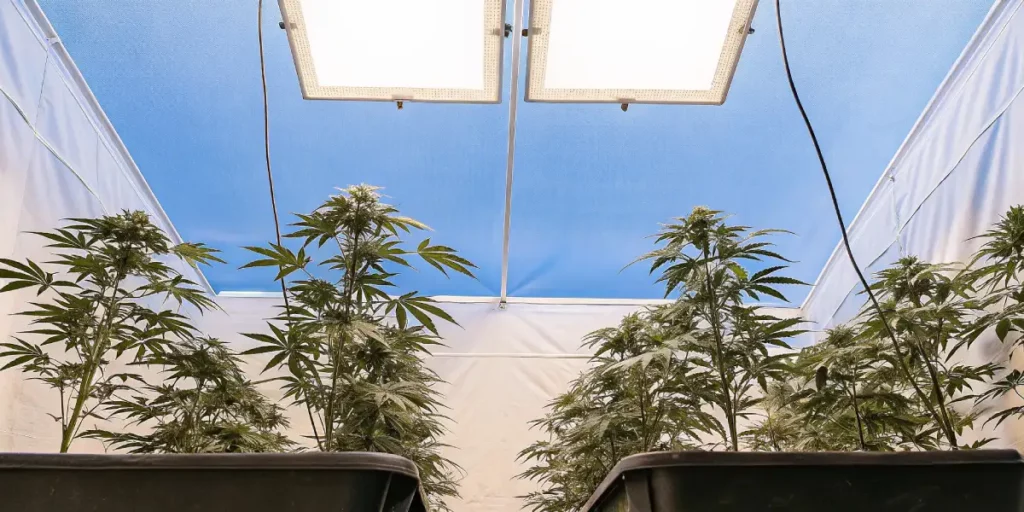
Is Blue Cheese Auto Worth Buying? Here’s What You Need to Know
Blue Cheese Auto is a popular cannabis strain celebrated for its unique flavor profile and ease of cultivation. This autoflowering variety is the result of crossbreeding Blueberry Auto and Cheese Auto, leading to a strain that is both flavorful and resilient. The defining characteristic of this strain is its distinctive taste and aroma, which combines sweet, fruity notes with a pungent, cheesy undertone. This makes it an appealing choice for growers seeking a flavorful and aromatic option for both personal and commercial purposes.
One of the primary reasons this strain is considered worth buying is its straightforward cultivation process. As an autoflowering variety, it doesn’t rely on a strict light schedule to flower, making it notably easy to grow for novices and experienced cultivators alike. With a typical flowering time of around 8–10 weeks, growers can expect to harvest their plants relatively quickly. Furthermore, its compact stature makes it suitable for both indoor and outdoor growing environments. These attributes make it ideal for those with limited growing space or those seeking a hassle-free growing experience.
From a consumer perspective, this strain offers a pleasing balance of effects. Known for its relaxing, euphoric high, it is often appreciated for both recreational and medicinal use. The effects can help alleviate stress, anxiety, and pain while maintaining a clear-headed experience. This combination of relaxation and mental clarity makes it a versatile option suitable for various occasions and needs. Those looking for a unique strain with an exquisite taste and reliability may find it to be an excellent addition to their collection.
FAQs about Blue Cheese Auto
What is Blue Cheese Auto?
Blue Cheese Auto is a popular autoflowering cannabis strain known for its robust flavor and ease of growth. It is a hybrid that combines the genetics of Blue Cheese and a ruderalis strain, which gives it the automatic flowering trait. This strain is favored by many due to its unique cheesy aroma with fruity undertones and is suitable for both novice and experienced growers.
How does the autoflowering trait of Blue Cheese Auto benefit growers?
The autoflowering trait of Blue Cheese Auto allows plants to flower based on age rather than light cycle changes, offering several advantages. This means growers can cultivate them throughout the year, regardless of the season, providing more flexibility in planning growth cycles. Additionally, these plants are generally smaller in size and mature faster, making them ideal for small spaces or multiple harvests per year.
What are the typical effects of consuming Blue Cheese Auto?
Blue Cheese Auto is known for delivering a well-balanced, relaxing high. Users often report feeling a calming body sensation, which helps to alleviate stress and tension. The strain’s effects also include a mild cerebral uplift, encouraging creativity and a sense of well-being. Many users find it beneficial for unwinding after a long day, making it a popular choice for evening use.
How does Blue Cheese Auto compare to its photoperiod counterpart?
Blue Cheese Auto and its photoperiod counterpart, Blue Cheese, share similar flavor profiles and effects; however, the main difference lies in their growth patterns. While the autoflowering version is easier to grow due to its automatic flowering capability, the photoperiod version might offer slightly higher yields and potency under optimal conditions. The choice between the two depends largely on the grower’s experience and cultivation goals.
What are the ideal growing conditions for Blue Cheese Auto?
Blue Cheese Auto thrives in both indoor and outdoor settings, though it prefers a stable environment with consistent temperatures. Indoors, maintaining a temperature range of 70-80°F (21-27°C) with moderate humidity levels is ideal. Outdoors, these plants perform well in temperate climates with abundant sunlight. The strain is relatively resilient to pests and diseases, making it a forgiving choice for growers who ensure basic plant care and attention.

